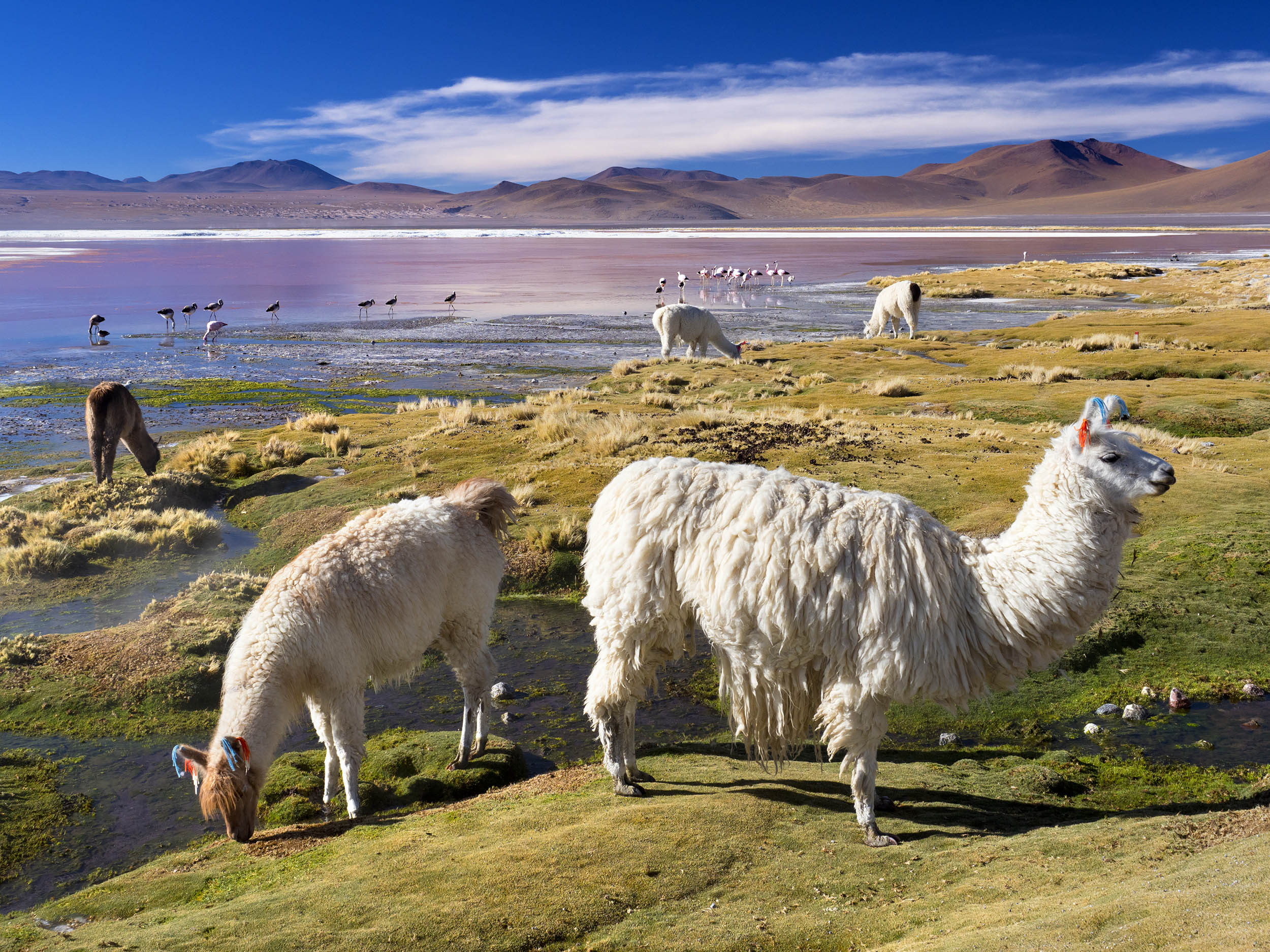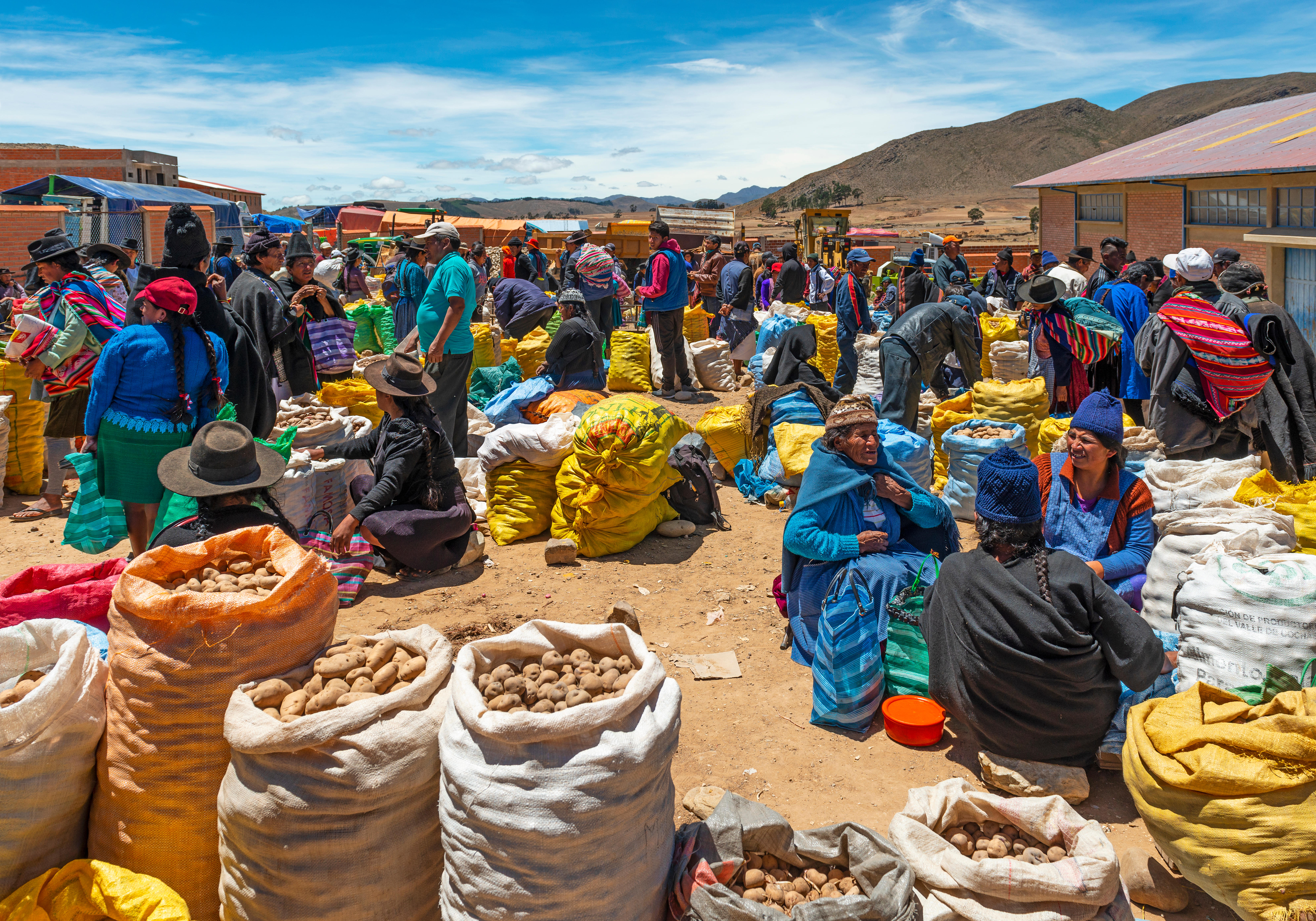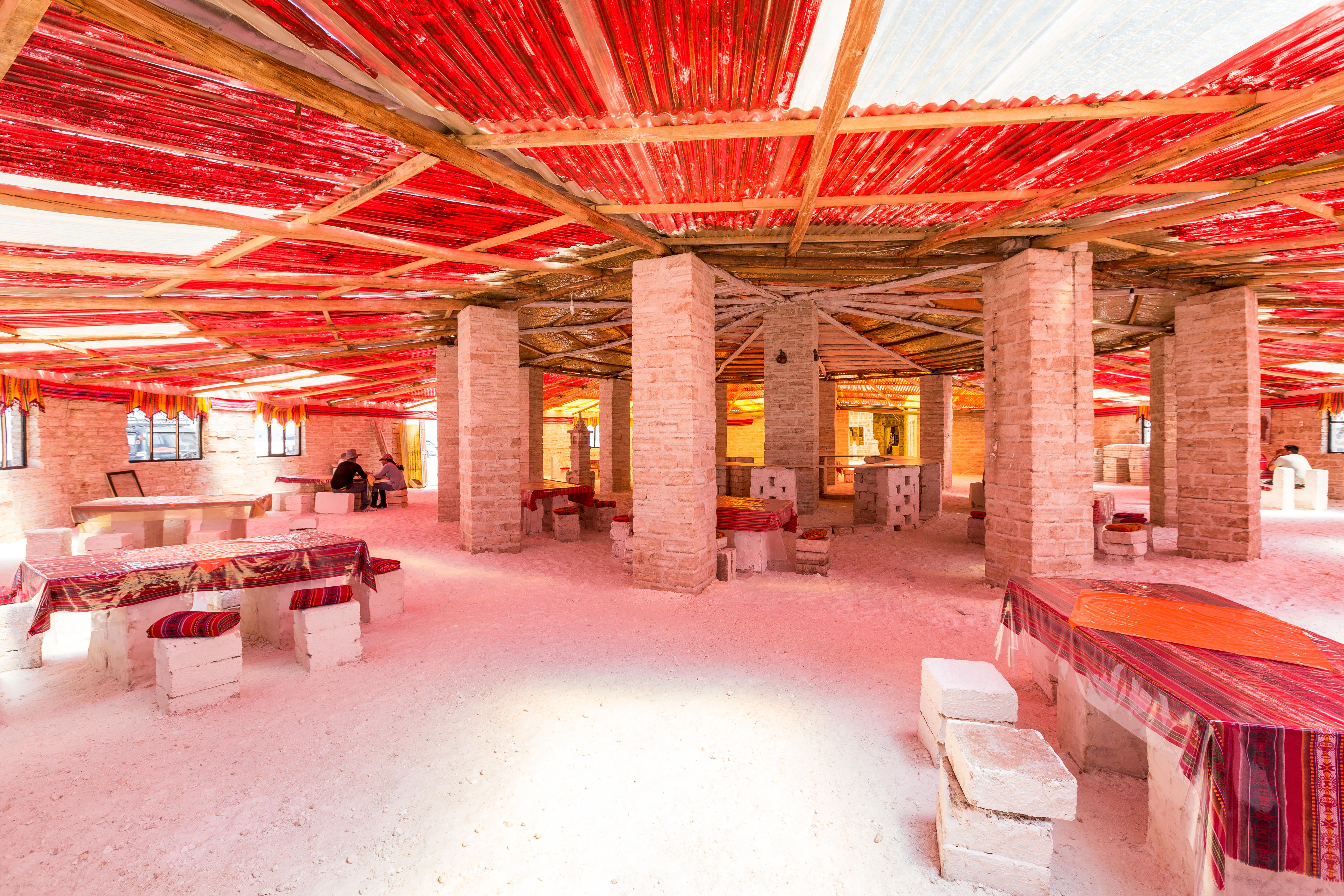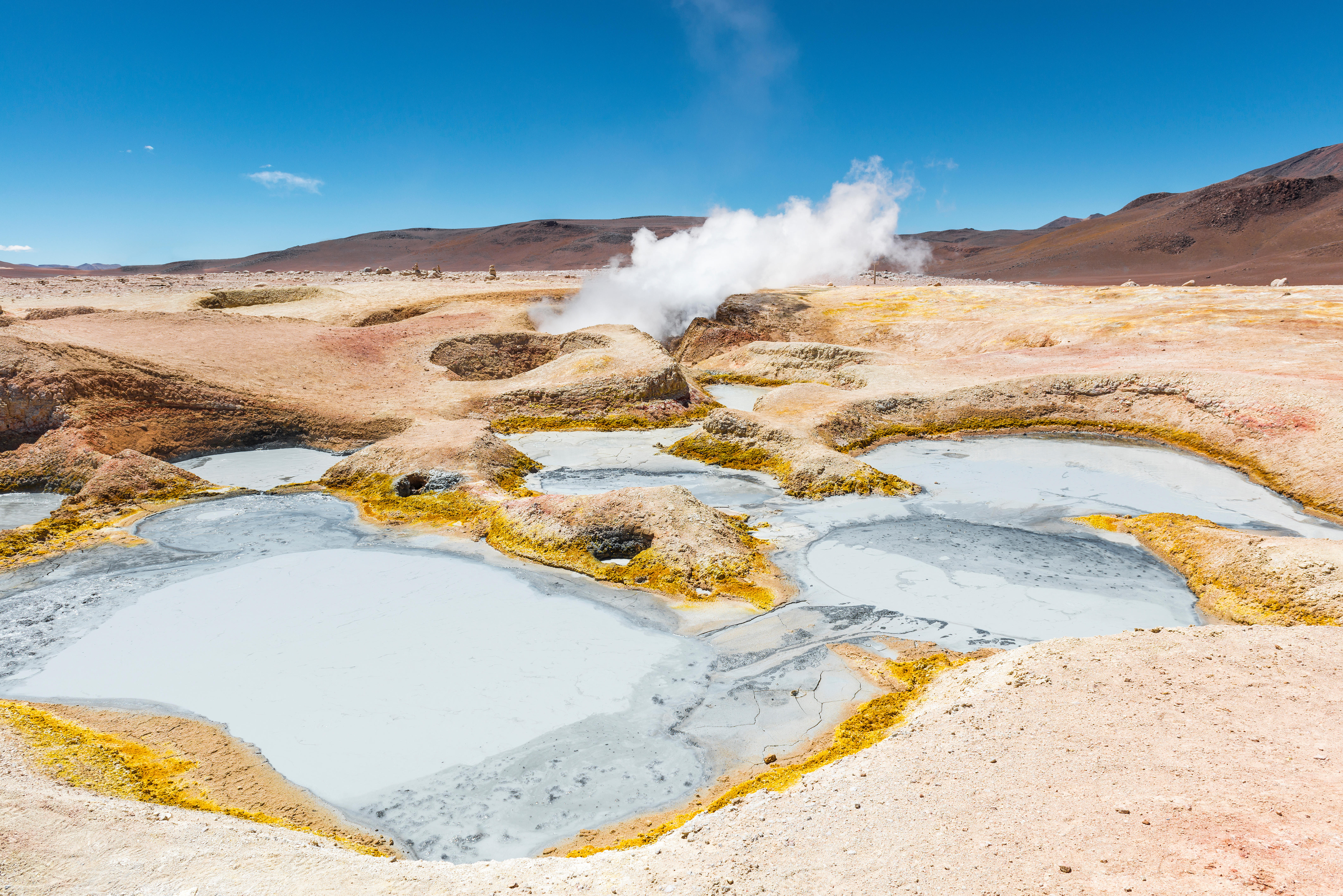A unique tour of Bolivia, from cathedrals and markets to the world’s first salt hotel
It's often overlooked, but the South American country of Bolivia holds all manner of wonders for the discerning traveller, as Mary Miers discovered.


Bolívar. What does the name conjure up? A Cuban cigar? El Libertador? Country Life readers, I think I know your answer. Poor Simón Bolívar: having won battles and overcome Spanish domination, the swashbuckling Venezuelan died forgotten and impoverished in 1830 aged just 47, his dreams of a united South America shattered.
To this day, the country that bears his name remains relatively undeveloped and little known — which, of course, is all part of Bolivia’s allure to the intrepid traveller. Whether you’re flying through mountains onto a high plateau cropped by llamas, stumbling across mummies in a remote cave or finding the carcasses of Victorian trains that once ran from Oruro to Buenos Aires abandoned in a desert, the sense of being in uncharted territory in Bolivia never quite subsides.
For some, the thrill is marred only by an altitude-induced headache, but that can be effectively relieved, I found, with coca-leaf tea, an oxygen mask and pills. For all the illusion of pioneering a lone trail through the Wild West — and yes, we passed Butch Cassidy and the Sundance Kid’s last redoubt near the dusty, one-mule village where the bandits met their end — in truth, you can explore Bolivia with ease and safety thanks to the combined expertise of Marisol Mosquera, founder-owner of the award-winning tour company Aracari, and Liz Rojas, Aracari’s local expert and guide.
We start at a cultural high point, in the historic capital of Sucre. One of the two best preserved colonial cities in South America, this jewel of neo-Classical architecture in the Andes spills over a plateau of the Central Highlands in a grid of red-tiled and whitewashed buildings punctuated by church towers. Among them is the Parador Santa María La Real, formed from three old houses and furnished by its connoisseur owner with carved and gilded antiques crafted by colonial artisans. With its vaulted ground floor and balconied courtyards, the parador has a monastic feel — we even found ourselves drinking wine one evening with a sprightly archbishop, Monsignor Jesús Juárez Párraga — yet its comforts will satisfy all but the most pampered guests.

Originally named La Plata — after the silver that drew the Conquistadores here — and later called Charcas after its administrative region, the 16th-century university town was renamed Sucre in honour of Bolívar’s second-in-command when independence was declared here in 1825. You can see the charter in the ornate chamber where it was signed, presided over by a portrait of Bolívar.
The House of Liberty overlooks the central plaza, for long a politically charged forum and melting pot of cultures. Stocky, bare-legged women in brightly coloured jackets, pleated skirts, fedoras and patterned socks sell their wares or rest under the umbrella shade of tall ligustrum and ceibo trees.
Hats, often topping long, glossy pigtails, are ubiquitous in this country. Sombreros Sucre makes and dispatches thousands a day and a tour of its factory — a sweatshop of sulphurous stenches, mechanical clatter and steam — is an experience not to be missed.
Sign up for the Country Life Newsletter
Exquisite houses, the beauty of Nature, and how to get the most from your life, straight to your inbox.
Having spent hours choosing between different styles of sombreros in the factory shop, the following day, we donned hats of a different order to enter a working mine in the ‘Cerro Rico’ of Potosí. After the ore was discovered here in 1544, the hill provided Spain with its greatest source of silver. By the 17th century, Potosí was the richest city in the world, with a population nearing 200,000.
Buildings such as the fortress-like mint that once bankrolled the Spanish empire or the Convent of Santa Teresa, filled with treasures given as dowries for nuns from noble families, bear impressive witness to Potosí’s astonishing former wealth.
Today, however, it’s a scruffy mining town, the flow of silver reduced to a trickle, zinc and lead now the principal metals. The miners work for co-operatives and have to supply their own equipment — this is the only place where you can buy dynamite at a general store. Working conditions in the tunnels are deadly and productivity precarious, so they make offerings of coca leaves, alcohol and cigarettes to the devil god El Tio, whose images leer through the darkness in the mineshafts.
In contrast to these Dickensian scenes, the market at Tarabuco is a spectacle of colour and festivity. Everybody is in their Sunday best and the glorious woven textiles of the Yampara people are all paraded and laid out for inspection in the open air. April is a good time to visit, with the harvest just beginning, the sky clear blue and the climate drier and cooler than in summer. Many have come far on foot from remote valleys to barter, socialise and match-make at the market. Women, with shawls covering their bulky bundles, twist spindles as they walk; wizened old men in striped ponchos chew coca leaves. Liz can identify a woman’s village from the cut of her skirt. Hat styles and weaving patterns denote status as well as district.
Stalls line the narrow alleyways, many laid out on the ground, their owners, in pretty aprons and sandals made of tyres, squatting beside them with their babies. Everybody is snacking and chattering in the ancient Quechuan language of the Andes. There’s a forge, a fortune teller, a thronging fruit-and-veg market and drinking dens reeking of chicha. Anybody interested in South American textiles should spend time in Sucre’s Museum of Indigenous Art before visiting Tarabuco’s vibrant Sunday market.

Another village known for its fine weaving is Candelaria, which has a small museum/ shop. Here, we also had a taste of the disappearing world of the old Bolivian landowners, at the invitation of Liz’s mother, Elizabeth Rojas. Hacienda Candelaria sprawls around a sleepy courtyard, its picturesque ranges comprising a 16th-century chapel with gilded baldacchino, a house with antique furniture and original wallpapers, a granary and ramshackle barns filled with antiquated farm tools.
From a kitchen hung with blackened pans came picante de pollo, cazuela (a traditional Sunday soup of peanuts served with the local salty cheese), sizzling corncobs picked that morning and a hot corn drink flavoured with apple and cinnamon known as Api. For all the romance of this ancient hacienda, with its overgrown orchards and air of faded grandeur, a bittersweet atmosphere pervades; a sense that, although close to the local community — Liz’s grandmother was of indigenous blood — the family struggles to survive here.
Similar problems have beset Cayara, another colonial mansion with a chapel, library and frescoed hall. It, too, has been stripped of all but a few acres under land reform, so the owners have now converted its courtyard ranges into rustic bedrooms and opened up the principal reception rooms for paying guests. From colonial hacienda to Palacio de Sal.
The world’s first salt hotel has igloo-like rooms and modern comforts to gear you up for a day on the Uyuni salt flats. For all the photographers, artists and star-gazers who flock to this most famous of Bolivia’s natural wonders, you can drive across the 4,633sq mile salar and see hardly a soul, mesmerised by the empty whiteness of salt and sky broken only by distant peaks floating like islands across a pristine strand. It’s cold up there at more than 12,000ft, but staying out until sunset is obligatory.

For our final leg, we explored the primeval landscapes of the Southern Altiplano, kicking up the dust as our skein of 4x4s glided through the surreal wildernesses of south Lipez. No human settlements here, just a stone army of petrified coral, a few llamas and vicuñas, rare cacti, thin plumes rising from the active Ollagüe Volcano and a valley of tumbled lava rocks. Then, into the Eduardo Avaroa Reserve, with its Laguna Colorada — nesting ground for more than 60,000 flamingoes — geysers hissing fumaroles and bubbling mud, thermal pools and the iridescent Laguna Verde, its arsenic waters whipped to froth by the incessant winds.
Backed by snow peaks and rust red hills, this landscape owes its palette of white, blue-green and pink colourwashes to the high density of minerals that make it, surely, one of the most ravishing — as well as potentially lucrative — deserts on Earth. We reach 16,100ft, where one-legged flamingos stand immobilised in ice. The air is thin and crystal clear, the wind chill. Heads throbbing, we don our alpaca hats and head for a lone hut that marks the Chilean border.
Mary Miers travelled to Bolivia with Aracari Travel (020–7097 1750; www.aracari.com), the pioneer in high-end tailor-made travel in Peru and Bolivia. A 10-day trip to Bolivia with Aracari covering Sucre, Potosí, Uyuni and Eduardo Avaroa Reserve starts at $4,989 (about £3,911) per person, based on two people travelling together, and includes all meals, guided visits and transfers.

Mary Miers is a hugely experienced writer on art and architecture, and a former Fine Arts Editor of Country Life. Mary joined the team after running Scotland’s Buildings at Risk Register. She lived in 15 different homes across several countries while she was growing up, and for a while commuted to London from Scotland each week. She is also the author of seven books.
-
 Two quick and easy seasonal asparagus recipes to try this Easter Weekend
Two quick and easy seasonal asparagus recipes to try this Easter WeekendAsparagus has royal roots — it was once a favourite of Madame de Pompadour.
By Melanie Johnson
-
 Sip tea and laugh at your neighbours in this seaside Norfolk home with a watchtower
Sip tea and laugh at your neighbours in this seaside Norfolk home with a watchtowerOn Cliff Hill in Gorleston, one home is taller than all the others. It could be yours.
By James Fisher